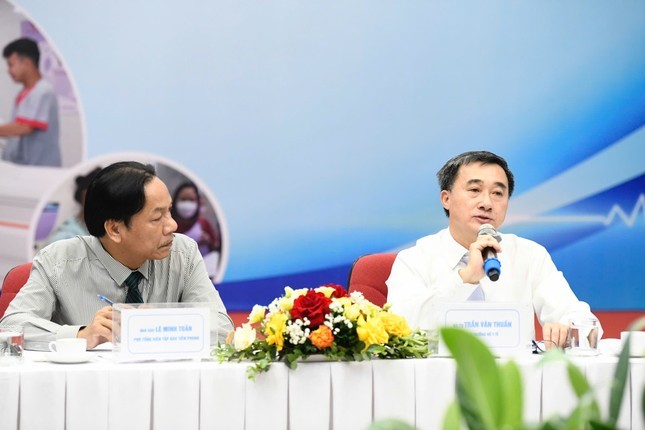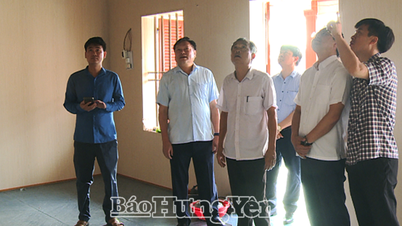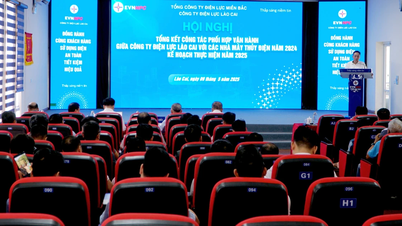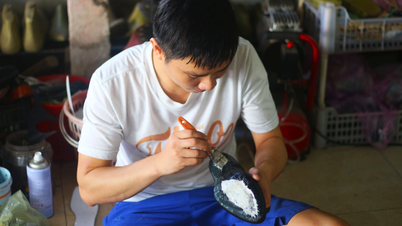
Health insurance payment is still "tight"
At the workshop "Further improving patient rights in diagnosis and treatment" organized by the Ministry of Health in collaboration with Tien Phong newspaper on May 8, Mr. Le Minh Toan, Deputy Editor-in-Chief of Tien Phong newspaper emphasized: "Since the COVID-19 pandemic, in many hospitals and medical facilities, there are still difficulties in examination, diagnosis and treatment due to lack of modern medical equipment, patients' financial capacity has not met, leading to limited indications in examination and treatment.
Although this situation has gradually improved recently, the reality is that the payment support from health insurance is still limited, causing patients with serious illnesses to not receive medical examinations with higher quality services; modern equipment for early and specialized diagnosis, early detection of diseases at early stages has not been applied... Some national programs for early screening of lung cancer, breast cancer... have not been paid for by health insurance".
In particular, many people currently have health insurance but still have to buy commercial health insurance, life insurance... with the hope of receiving better treatment. In reality, health insurance payment is still quite far from what patients want.
Deputy Minister of Health Tran Van Thuan also frankly admitted: The rights of patients in the diagnosis and treatment process still have shortcomings. Some medical facilities are still overloaded, waiting times are long, and extra costs still exist. The lack of synchronization of data connection leads to duplicate testing and diagnosis, causing costs and affecting the quality of treatment. Providing complete information to patients such as professional indications, treatment options, the right to consent, etc. has not been implemented in a complete and transparent manner.
In particular, although health insurance policies have made remarkable progress, in the context of constantly developing medical technology, the list of drugs, supplies and techniques covered by health insurance needs to continue to be updated so that patients are not left behind due to financial barriers.
According to Deputy Minister Tran Van Thuan, these shortcomings pose an urgent need to fully and substantially ensure the rights of patients, especially in the process of diagnosis and treatment - not only in terms of expertise or technique, but also in terms of institutions, social justice and service ethics. The health sector is still making great efforts to gradually overcome these limitations.
Regarding the payment of benefits for current health insurance participants, Mr. Hoang Trung Tuan, Deputy Director of the Department of Health Insurance (Ministry of Health), said: By the end of 2024, the health insurance coverage rate in Vietnam will reach 94.2% of the population. This is a remarkable figure that demonstrates the persistent efforts of the policy system and localities in expanding the social security network. The health insurance benefits of the contributor (from 80% to 100% depending on the target group) include: Treatment line (on-line or off-line); technical services used (cost level, issued list); The scope of benefits is constantly expanding towards covering modern medicines, equipment, technical services and treatment methods, while giving priority to the poor, ethnic minorities, and other vulnerable groups.
Currently, the specific benefits of health insurance card holders apply to the list of modern medicines for more than 1,030 active ingredients/drugs and 59 types of radioactive drugs, health insurance pays from 30% to 100%, depending on the specialized conditions and pathology; applies to the list of traditional medicine for nearly 1,000 traditional medicine formulas, 349 medicinal herbs are paid. Health insurance pays for 337 groups of medical equipment from common consumables to high-end intervention equipment such as: Artificial blood vessels, stents, pacemakers, artificial joints, ultrasound knives, Ligasure... Health insurance pays for almost all medical technical services such as: PET-CT, DSA, robotic surgery, Gamma Knife radiosurgery, cancer gene testing..., in particular, high-tech services in cancer diagnosis, cardiovascular intervention, bones and joints, molecular genetics have also been expanded to cover.
In particular, new forms of medical examination and treatment such as: Remote medical examination and treatment; medical examination and treatment at home; family medicine; support for transportation costs from all levels; treatment of refractive errors for children; treatment of rare and serious diseases such as: pancreatic malignancy, mediastinal tumors, retinopathy of prematurity, Wilson's disease, congenital heart failure... have been paid.
However, according to experts, with advanced techniques such as diagnostics and treatment by imaging, every unit wants to invest in a high-quality machine for the best diagnosis, and invest in additional AI technology. But there is still a dilemma about whether the hospital spends money to buy it, and whether it can collect more from the people; and whether patients can pay more when using advanced technology in medical examination and treatment? In addition, there are many procedures, techniques, and some issues in medical examination and treatment that people have not been covered by health insurance.
Balance to add benefits for patients
Mr. Duong Huy Luong, Deputy Director of the Department of Medical Examination and Treatment Management, said: Currently, the health insurance fund is still limited compared to the needs of patients. Therefore, balancing between ensuring the rights of patients and maintaining the quality of professional treatment is still a big challenge. The Ministry of Health has issued Decision No. 1227 on implementing a common list for paraclinical services, which will help save costs and allocate resources more effectively.
In addition to limiting unnecessary prescriptions, the Ministry of Health is also developing policies to balance ensuring patient rights and maintaining professional treatment quality. The Ministry of Health will continue to develop other policies such as: Connecting clinical data, developing advanced quality standards, to improve the quality of medical services and protect patient rights.
According to Deputy Minister Tran Van Thuan, in the face of the increasing payment needs of patients, while the health insurance fund is still limited; the remaining funds from previous years and 2025 are only enough to pay for patients in 2025. Therefore, it is necessary to study to increase the fund for health insurance. It is necessary to be serious in medical facilities, avoid profiteering in facilities, and perform appropriate diagnosis and treatment. For patients who are eligible to pay, medical facilities should proactively negotiate to ensure the most secure payment.
“In the coming time, it is necessary to calculate depreciation and management fees in health insurance. It is necessary to balance and increase health insurance contributions and have other solutions such as supplementary insurance to reduce patients' out-of-pocket expenses for medical examination and treatment. Currently, patients pay 40-45%, exceeding the WHO recommendation of 30%,” said Deputy Minister Tran Van Thuan.
Experts also believe that, along with the compulsory health insurance for all people, there should be many other forms of insurance participating in the health sector. Because currently, many people have a need for medical examination and treatment at a higher level than the basic level of compulsory health insurance. On the other hand, when there are different types of health insurance, it will create competition, contributing to improving the quality of health services.
Source: https://baolaocai.vn/rut-ngan-khoang-cach-giua-nhu-cau-dieu-tri-va-chi-tra-bhyt-post401528.html



![[Photo] Russian military power on display at parade celebrating 80 years of victory over fascism](https://vphoto.vietnam.vn/thumb/1200x675/vietnam/resource/IMAGE/2025/5/9/ce054c3a71b74b1da3be310973aebcfd)
![[Photo] General Secretary To Lam and international leaders attend the parade celebrating the 80th anniversary of the victory over fascism in Russia](https://vphoto.vietnam.vn/thumb/1200x675/vietnam/resource/IMAGE/2025/5/9/4ec77ed7629a45c79d6e8aa952f20dd3)

![[Photo] Magical moment of double five-colored clouds on Ba Den mountain on the day of the Buddha's relic procession](https://vphoto.vietnam.vn/thumb/1200x675/vietnam/resource/IMAGE/2025/5/9/7a710556965c413397f9e38ac9708d2f)
![[Photo] Prime Minister Pham Minh Chinh chairs a special Government meeting on the arrangement of administrative units at all levels.](https://vphoto.vietnam.vn/thumb/1200x675/vietnam/resource/IMAGE/2025/5/9/6a22e6a997424870abfb39817bb9bb6c)

















































































Comment (0)